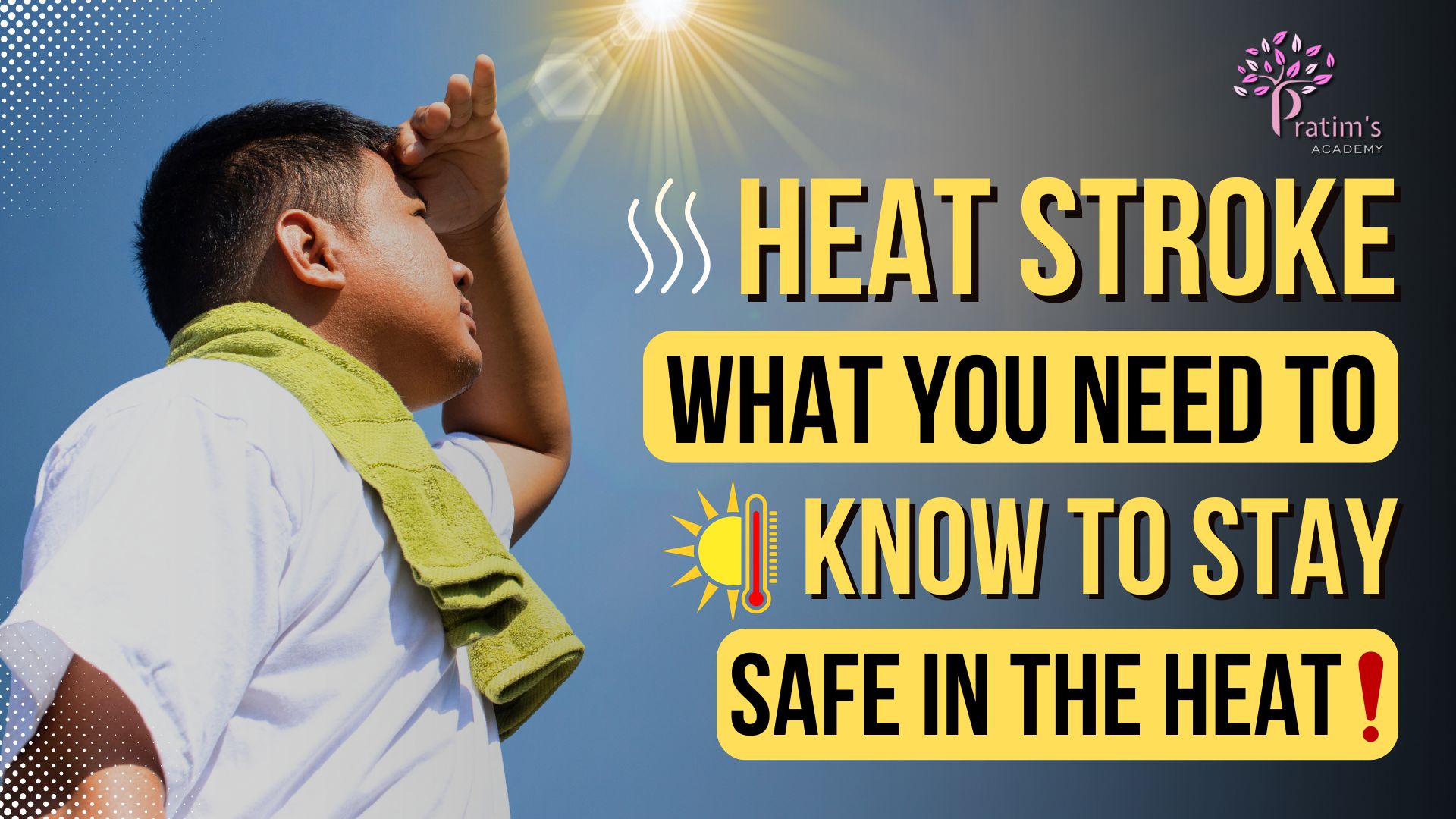Heat Stroke: What You Need to Know to Stay Safe in the Heat
As temperatures increase, the likelihood of experiencing heat stroke rises, highlighting the importance of understanding this serious condition that requires urgent medical care. Heat stroke happens when the body’s temperature regulation fails, often due to extended exposure to high heat, intense physical exertion, or a combination of these factors. To effectively recognize this hazardous situation, it’s crucial to identify the symptoms, which may consist of an extremely elevated body temperature (typically over 104°F or 40°C), confusion or changes in mental clarity, a rapid pulse, nausea, and in serious instances, even loss of consciousness.
What is Heat Stroke?
Heat stroke is a pivotal medical emergency that arises when the body’s core temperature surpasses 104°F (40°C), reminding us of the incredible resilience of our bodies and the importance of heeding its signals. This severe condition can develop from less severe heat-related illnesses, such as heat exhaustion, especially in hot and humid environments. It’s important to identify the symptoms early and implement preventive steps to safeguard yourself and those around you.
Symptoms to Watch For:
Recognizing the early symptoms of heat stroke can be crucial in preventing serious outcomes. Here are several key signs to look for:
- Elevated body temperature (over 104°F or 40°C)
- Skin that is excessively hot and dry (or heavy sweating in cases of physical exertion)
- Confusion or mental disorientation
- Rapid pulse and breathing
- Severe headaches
- Nausea or vomiting
- Seizures
Unconsciousness By being aware of these signs and acting quickly, you can help protect yourself and others during extreme heat conditions. Stay vigilant and take proactive measures for safety!
What To Do in Case of Heat Stroke:
If you suspect someone is suffering from heat stroke,
- Call emergency services: It’s essential to act quickly, as this condition represents a serious medical crisis. Begin by calling for emergency services without delay, since prompt action is crucial.
Emergency? Call VIVACITY Multispeciality Hospital for prompt care and support
- Move the person to a cooler place: After contacting help, focus on relocating the person to a cooler area. Ideally, find shade outdoors or take them into an air-conditioned space to help decrease their body temperature. To assist in cooling them down effectively, remove any extra clothing that may inhibit heat loss. This will permit the body to dissipate heat more easily.
- Cool them down rapidly: Next, use cool water on their skin or apply ice packs to key areas where blood vessels are close to the surface, like the neck, armpits, and groin. These areas aid in cooling the blood circulating in the body.
- Do not give fluids if the person is unconscious or disoriented: Additionally, fanning the individual can promote evaporation and further help in lowering their temperature. However, if the person is unconscious or disoriented, avoid giving them fluids to prevent choking or other hazards. Always ensure their safety and well-being while waiting for medical help to arrive.
How to Prevent Heat Stroke:
To protect yourself from high temperatures, consider the following advice:
- Keep yourself well-hydrated by drinking water consistently, even if you don’t feel particularly thirsty.
- Refrain from spending time outdoors during the hottest parts of the day, typically between 10 AM and 4 PM.
- Opt for lightweight, breathable clothing and a wide-brimmed hat for sun protection.
- Apply sunscreen to prevent sunburn, which can hinder your body’s natural cooling mechanisms.
- Take regular breaks if you’re engaged in outdoor activities or labor.
- If you are unfamiliar with a hot climate, allow your body to gradually adjust to the heat.
Final Thoughts:
Heat stroke can occur quickly and presents a significant danger to individuals across all age groups. However, it is particularly hazardous for at-risk populations, including the elderly, young children, and those with chronic health issues. Recognizing the profound impact of direct sunlight is essential. Protect yourself by planning your activities with intention, staying well-hydrated, and tuning in to your body’s signals. Embrace the shade, wear lightweight clothing, and take regular breaks to keep your body temperature in check. Enjoy outdoor adventures with a spirit of safety and a commitment to staying cool.
REFERENCES:
- www.hopkinsmedicine.org
- Extreme heat, 2021, US Centers for Disease Control and Prevention.
- Leon LR, Bouchama A. Heat stroke. Compr Physiol. 2015 Apr;5(2):611-47. [PubMed]
- Rashad FM, Fathy HM, El-Zayat AS, Elghonaimy AM. Isolation and characterization of multifunctional Streptomyces species with antimicrobial, nematicidal and phytohormone activities from marine environments in Egypt. Microbiol Res. 2015 Jun;175:34-47. [PubMed]
- Morris A, Patel G. Heat Stroke. [Updated 2023 Feb 13]. In: StatPearls [Internet]. Treasure Island (FL): StatPearls Publishing; 2025 Jan-. Available from: https://www.ncbi.nlm.nih.gov/books/NBK537135/
- Bouchama A, Cafege A, Devol EB, Labdi O, el-Assil K, Seraj M. Ineffectiveness of dantrolene sodium in the treatment of heatstroke. Crit Care Med. 1991 Feb;19(2):176-80. doi: 10.1097/00003246-199102000-00011. PMID: 1989755.




